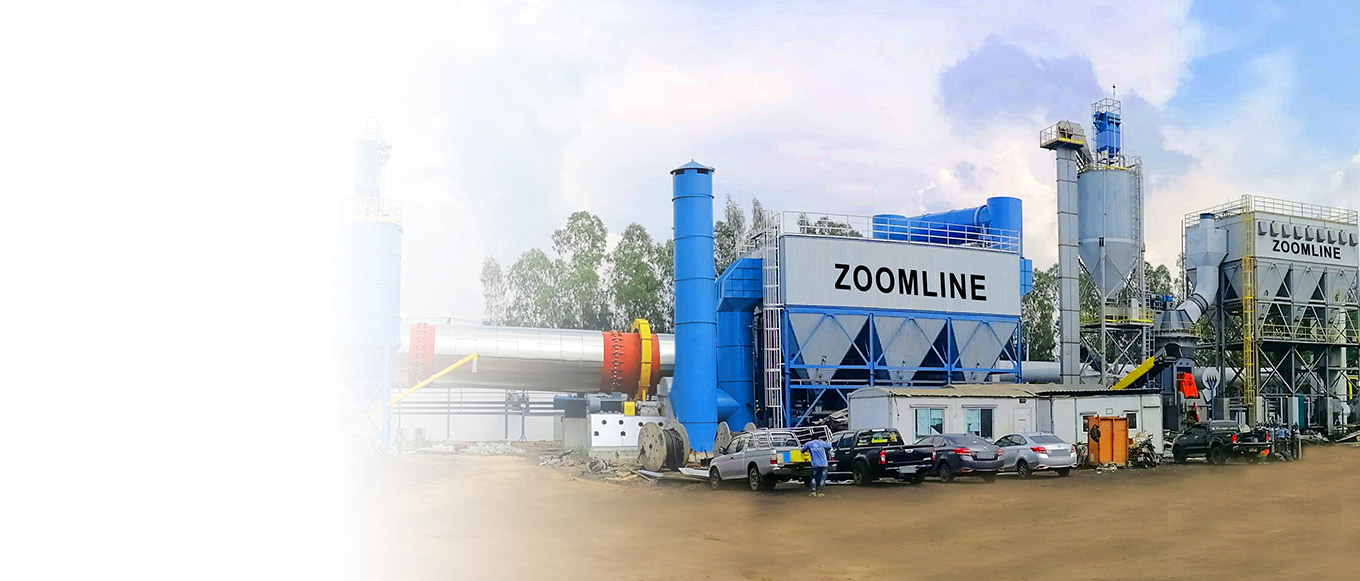Introduction to Asphalt Mixing Plants
An asphalt mixing plant, also known as an asphalt mixer plant or asphalt batch mix plant, is a facility where aggregates, bitumen, and other ingredients are combined to produce asphalt mixtures of various grades. These mixtures are vital for constructing and maintaining roads, parking lots, and other paved surfaces. Among the common types, batch mix plants stand out for their batch-by-batch production model, involving cold aggregate feeding, drying in a drum, adding bitumen and fillers, and final mixing in a batch mixer.
Key Components of Batch Asphalt Mixing Plants
Cold Aggregate Feeder
The starting point of production, storing and feeding aggregates of different sizes into the drying drum. Adjustable gates control the aggregate flow to ensure precise mixing proportions.
Drying Drum
A critical component where aggregates are heated to remove moisture. Proper drying is essential for maintaining the quality and consistency of asphalt mixtures, supported by burner systems for heat supply.
Hot Elevator
Transports dried aggregates to vibrating screens for separation and grading, ensuring smooth transfer from the drum to the mixing unit.
Mixing System
The core zone where dried aggregates, bitumen, and additives are combined. Twin-shaft paddle mixers or pug mills ensure thorough blending for uniform mixtures.
Bitumen Storage Tanks
Insulated tanks that store heated bitumen to prevent solidification, maintaining its flowability for optimal mixing.

Detailed Operation Procedures of Batch Asphalt Mixing Plants
Cold Aggregate Feeding and Screening
Unheated raw aggregates are fed into different bins of the cold aggregate feeder by size, with flow controlled via bin gates.
Aggregates are conveyed to the drying drum by a charging conveyor, where burners heat and dry them.
Dust Control and Hot Aggregate Transport
Most hot mix plants feature a primary dust collector for settling heavy particles, complemented by a secondary bag filter for enhanced efficiency.
Dried aggregates are lifted by a bucket elevator to the screening unit at the top of the tower. Multi-layered screens separate aggregates by size into dedicated hot bins.
Batching and Mixing
Aggregates from hot bins are weighed and discharged into the mixing unit. Bitumen is pumped from storage tanks to a weighing hopper before injection, while fillers are separately weighed and added.
Ingredients are mixed for a set time in the mixer to form hot mix asphalt (HMA).
Finishing and Storage
Completed HMA is discharged into waiting trucks or temporarily stored in silos.
The entire process is monitored and controlled via a central control panel.

Operational Tips for Asphalt Mixing Plants
Production Capacity and External Factor Management
Capacity is affected by material moisture, product type, and climate. Moisture detectors and testing instruments should be used to record data and adjust operations—every 1% reduction in mineral moisture saves 1kg fuel per 1t of product.
Pre-Operation Checks and Runtime Monitoring
Thoroughly inspect all components before startup; never operate faulty equipment. Monitor the dust collector after ignition to ensure the drying drum burns under normal negative pressure.
Shutdown and Maintenance Protocols
After production, stop feeding, gradually shut down the burner, and clean the mixer with hot fine materials. Stop the drum, blower, and dust system when the drum temperature drops to 45–50°C, then cut off the main power.
Bag Filter Maintenance
New bag filters require flue gas temperature monitoring: excessive heat damages filters, while low temperatures cause dew condensation. Adjust promptly based on differential pressure gauge readings.

Maintenance and Upkeep of Asphalt Plants
Routine Maintenance Practices
Inspect conveyors, motors, belts, and control systems for wear or leaks. Lubricate moving parts as scheduled and clean screens, bins, and ducts to prevent debris buildup.
Scheduled Maintenance Plans
Follow daily, weekly, monthly, quarterly, and annual maintenance manuals for lubrication, oil refills, part replacements, and repairs to ensure peak performance and minimize downtime.
Conclusion
The operation of an asphalt mixing plant, from aggregate feeding to finished product discharge, relies on precise coordination of components and strict process control. Adhering to operational standards and maintenance schedules not only ensures mixture quality but also enhances equipment efficiency and longevity, forming the foundation for successful road construction projects.





















